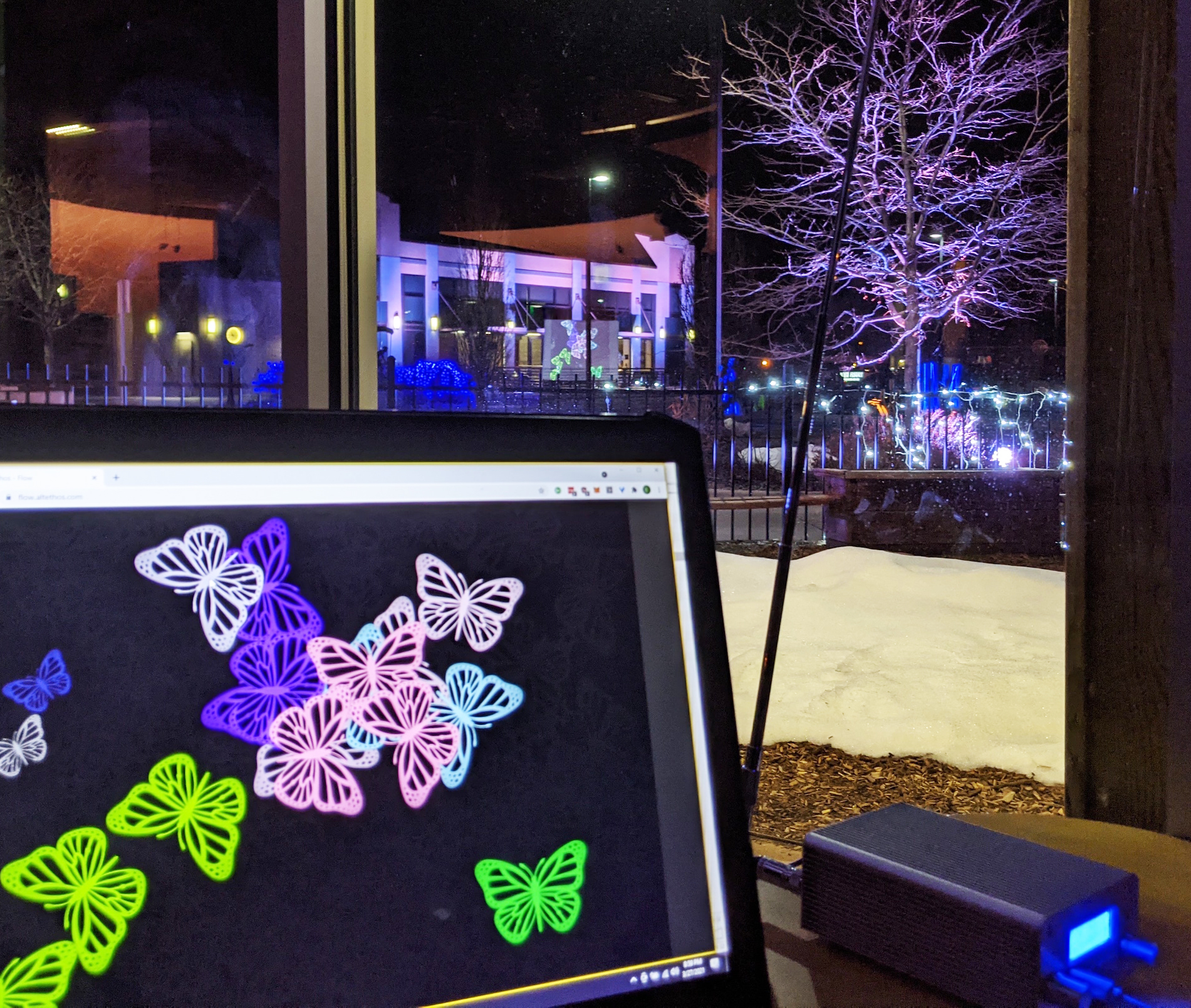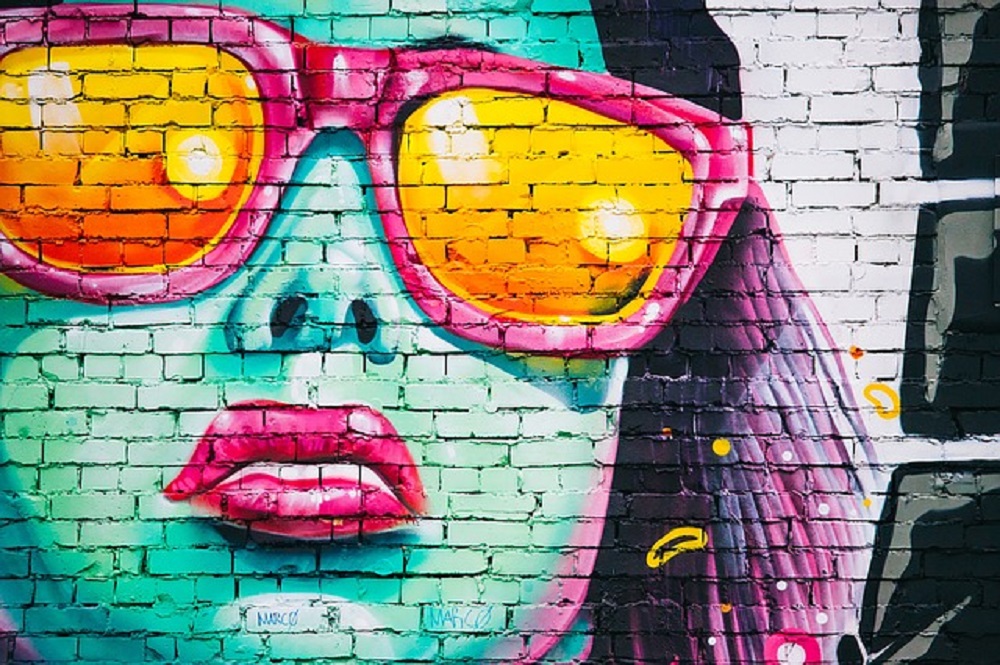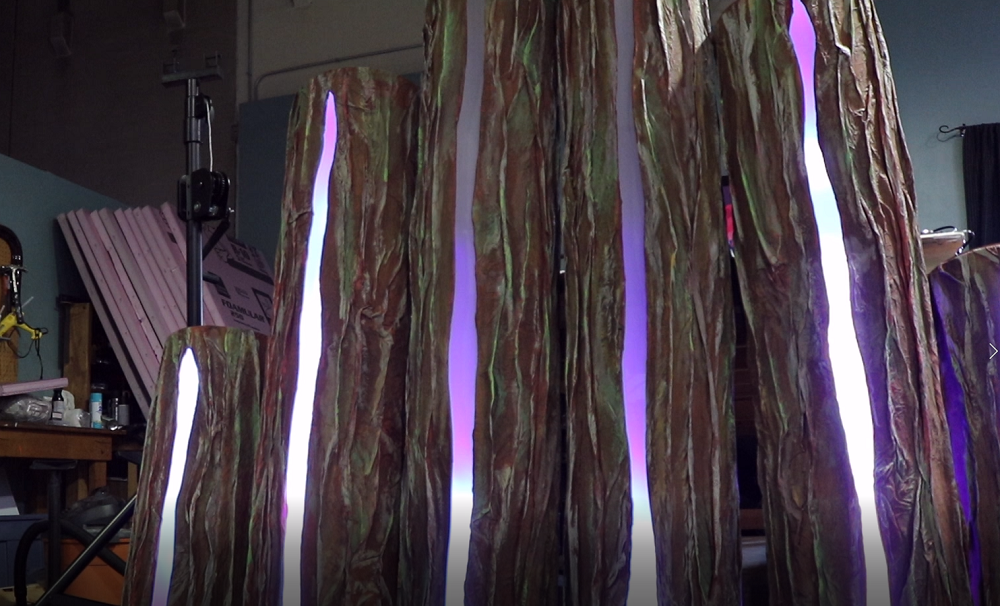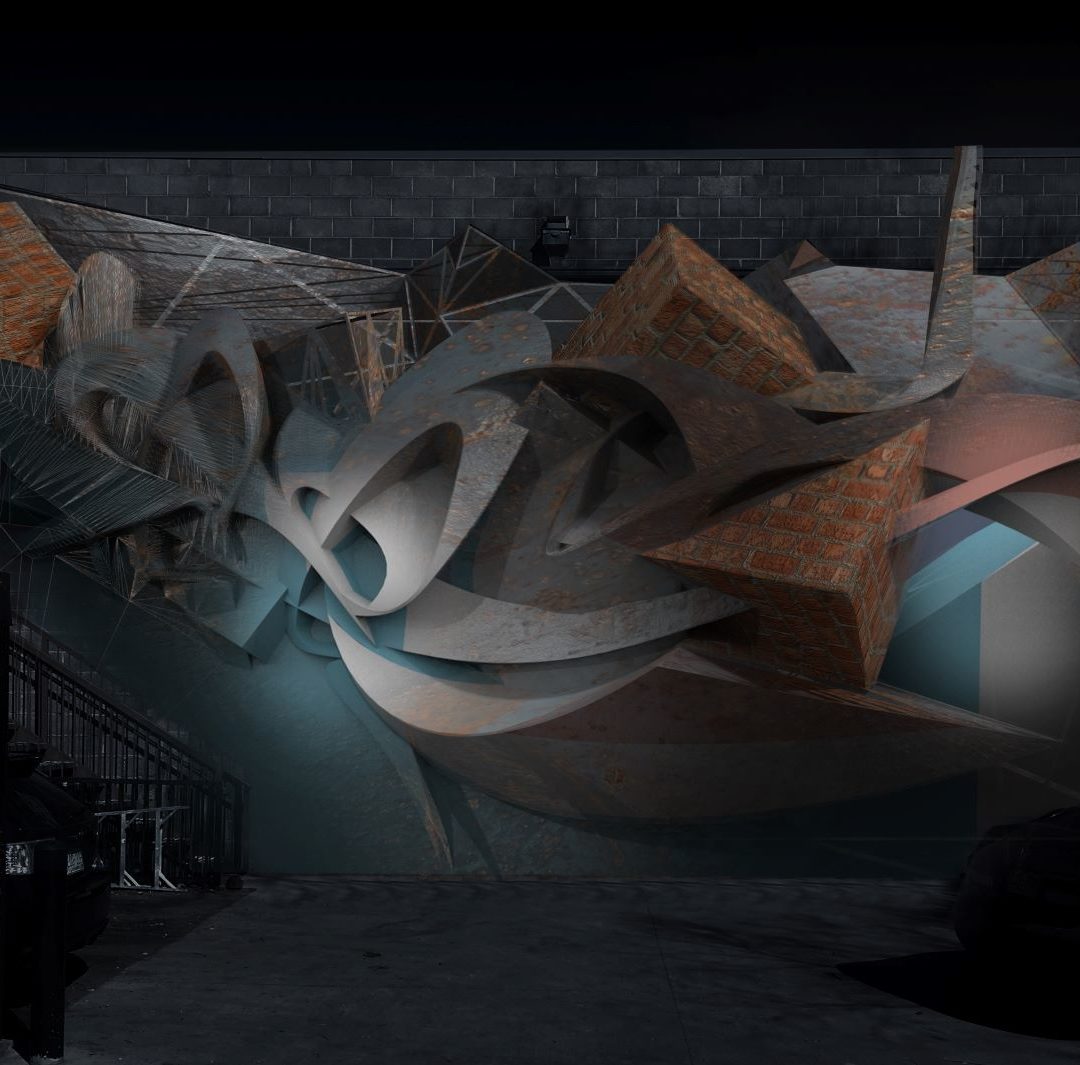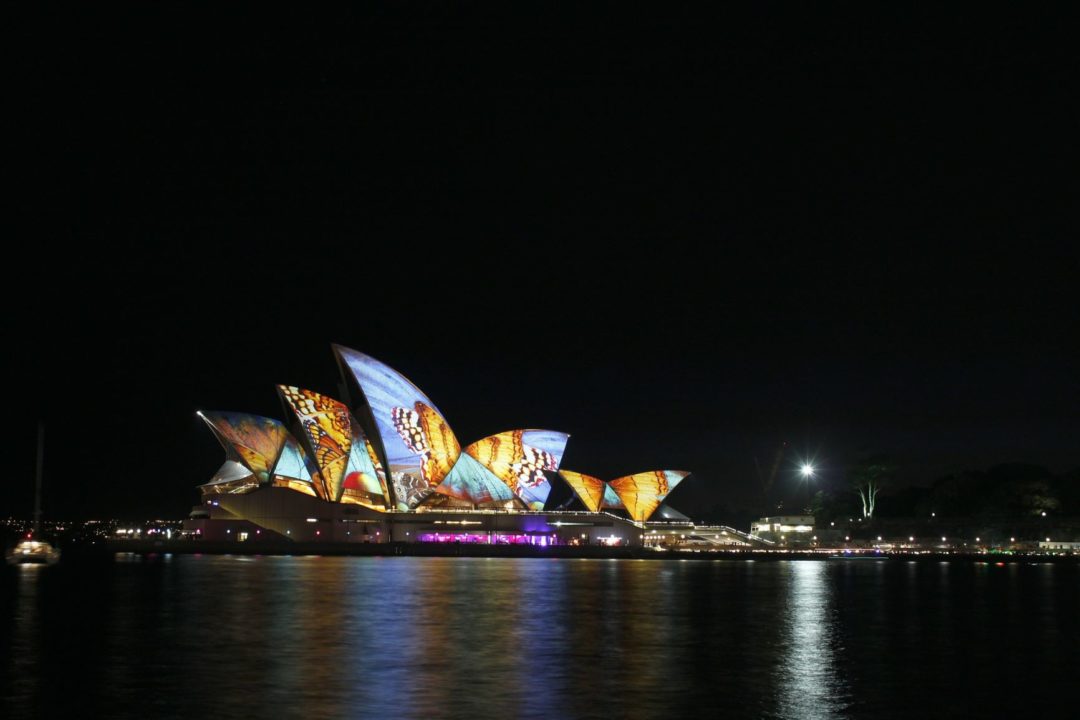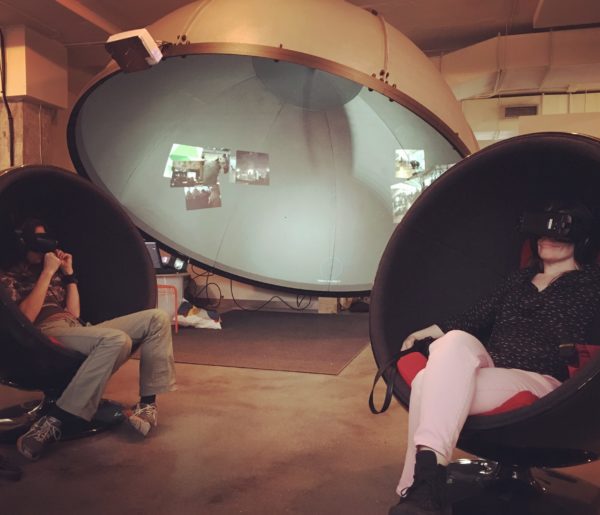
by ethanbach | Apr 13, 2021 | Installation Art, Projection Mapping, Public Art, Virtual Event Production
eFlow is a fun and creative way for people to engage and connect while physically distancing. Whether at a drive-in event or virtual event this collaboratively creative platform can be easily branded or themed.
Launch eFlow
eFlow‘s platform is fully customizable – custom stamps, brushes, and backgrounds are all possible to create branded experiences for your event. The ongoing live collaboration can be displayed publicly by projecting the canvas large-scale at your physical event as well – creating a hybrid experience for both onsite and virtual attendees.
eFlow is an artistic collaborative WebGL fluid simulation that works in your browser. You and other online participants can collaborate with colors and shapes on an ever-changing canvas. See the networked artwork shift and grow in real time as others join in on the fun.
Previously…
Outdoor Immersive Storytime
At the Anythink Brighton Drive-In Storytime event, as attendees got settled into their parking spots, they were able to play with eFlow on the screens across their personal devices and see their the projection screens in the lot.
Virtual Dia De Los Muertos Experience

Alt Ethos created a custom Dia De Los Muertos interactive experience for Thornton, Colorado’s 5th year of its annual celebration. While October 2020 restrictions transformed this hybrid event into online-only, visitors were able to connect and share the community memorial video online and play with others decorating the sugar skull on eFlow.
Let’s talk about ways that Flow can bring magic and play into your event! Interactive and immersive exhibits take your event to the next level.
Schedule a Complimentary Consultation
eFlow is based on the open-source fluid simulation developed by Pavel Dobryakov under the MIT license.

by ethanbach | Oct 9, 2018 | Community, Jobs, Technology
For decades, murals have been an essential form of creative placemaking in urban spaces that are designed to brighten local communities through art. Alt Ethos is transforming the impact and nature of murals through augmenting them with projection mapping and real-time motion graphics. This synthesis of old and new combines visual artistry with state of the art technology to explore a new creative medium designed for public engagement.
Projection mapping casts pixels on a surface in a way that is similar to how a painter casts paint onto a blank canvas. Both techniques create beauty and evoke emotions, but the former offers its viewers the opportunity to imagine themselves within the canvas and experience visual content that is dynamic.
How Projection Mapping Works
If you’ve ever been to a movie theatre or watched a powerpoint presentation, you probably understand basic projection. On that most basic level, light is displayed onto a flat surface to produce an image or video. In projection mapping, the same concept is applied to 3D objects, creating visual content with an emphasis on 3D form.
Projection mapping offers the ability to turn a mural into a dynamic piece of video art during the night time hours. The murals can be as simplistic or intricate as desired and the visuals can be tied to a variety of interactions that connect the audience and surrounding environment with the placemaking activation.

This transformative creative technology opens immense possibilities to engage audiences and embrace the creative placemaking that has propelled many murals into the urban landscape. Now both a daytime and nighttime engagement are a reality.
At night, the piece transforms based on the motion of viewers as they pass – encouraging audiences to impact their visual experience through motion and the passage of time. This creates a “community first” dynamic, drawing audiences of all ages into an environment where they collaborate to transform a piece of architecture.
Alt Ethos Mural Project
This approach has been at the heart of Alt Ethos’ latest project, a nighttime interactive mural in collaboration with world renowned Italian artist Peeta. Peeta was the perfect partner for the first iteration of this new technology as his conic twisting forms, starting from a digital model, create a playground for visual content opportunities.
If you are interested in exploring the social and economic benefit of this new creative technology, please drop us a line at hello@altethos.com

by ethanbach | Oct 4, 2018 | Highlights, Technology
Experiential design isn’t just a buzzword in marketing. Not only can it be effective for businesses trying to gain customers, there are many other creative uses for this artform. Experiential design is used in art shows, private events, and more recently, live music performances.
From Super Bowl concerts to experimental musicians, this practice is taking hold in the music industry for a variety of reasons. Live concerts aren’t just about the songs anymore. Concert-goers expect a full show, complete with visual entertainment and the opportunity to interact during the performance. While experiential design can be a major concert draw and build fans’ loyalty, it can be difficult to pull off for mobile designs. If you’re planning an experiential design for a concert or live performance, keep these three principles in mind:
Create elements that are on-brand and audience friendly
This should be somewhat obvious, but many designers focus on creating elements that “look cool,” yet are not on-theme with a brand’s message or persona. You must choose elements will add value to the live performance and will drive home the artist’s main message, persona, or theme of their tour. Album art or music videos can serve as great sources of inspiration.
Easy design and maintenance
Offering design elements that are easy to operate and maintain can solidify your relationship with an artist. If your equipment malfunctions or doesn’t operate as intended, no matter the reason, the artist will be disappointed and more likely to choose another partner for their next stage design. While you might have access to a tour technician, you still want to ensure the equipment is easy to use so that you can eliminate as much of the learning curve as possible.
Lightweight and durable
Custom fabricated lighting and set design pieces are some of the most difficult to create because they have to be mobile. You must choose your materials carefully to ensure they are easy enough for a roadie to transport, and durable enough so that if they are tossed around on the trailer, they won’t be permanently damaged. Using waterproof materials when possible is also a plus, making your equipment safe for outdoor concerts.
Recent projects

Just recently, AltEthos built a stage design for experimental electronic musician CloZee who draws on musical inspirations such as Tipper and Amon Tobin. CloZee incorporates intricate light and projection displays into her theatrical performances. We offered her several nature-inspired units using LEDs to cast changing light onto the stage.
Alt Ethos created several free-standing tree trunk units with muslin finish and placed an LED bar to shine through a frosted crack in the surface. The units contain a simple, detachable backboard for maintenance, and come in custom carrying cases for safety. You can view the finished design on our Instagram page.
We hope these interactive, colorful trees serve CloZee well on her 2018 tour, as using these three mobile design principles supported our stage design philosophy. For more information on how AltEthos does stage and experiential design, click here.

by ethanbach | Aug 22, 2018 | Community, Technology
For city planners and councils, constantly finding new ways to Improve a community’s economic and social growth is not an easy task. The best way to get people out of their homes and into the streets to interact with their neighbors and spend money at local businesses is to provide a unique experience that engages people of all ages. That is why communities are turning to experiential design events that use the new forms of art to attract hundreds of visitors and provide a major boost to the local economy. At Alt Ethos, we can help you make this type of event possible through the latest in modern entertainment and light art festivals. Learn more about this cutting-edge community experience and how to plan your own event:
If you have never heard of light art, or luminism, it is an art form where light is emitted from a sculpture to create a specific visual effect. Several light sources can also be used to create art on a surface. These techniques are often used in combination with local architecture for a highly visible final product. This type of art is creative, engaging, and a real crowd-pleaser.
While light art festivals aren’t yet commonplace, they are increasing in popularity as cities work to find new ways to attract visitors and engage residents. Hosting a light art festival in your city provides people a fun and interactive experience. It also puts your city “on the map” as destination for an extra-ordinary festival.
Tips for planning your festival:
- Determine a best location – Because light art is often created by projecting light onto walls and other outdoor “canvases”, you need to choose a location with an ideal architectural landscape to accommodate a variety of light sculptures.The Sydney Opera House is one example of a unique building that provides the perfect venue for light art and while also challenging artists. Not every city is home to such an architectural icon, so keep in mind that plain white buildings will also provide plenty of space and can be used for light sculptures of all kinds.

You also want to take other logistical factors into consideration. Be sure to choose a place where road closures won’t cause too much inconvenience and visitors will have plenty of space to safely walk and shop vendors.
- Create an application process – For your festival to be a success, you must invite a variety of light artists as well as other street vendors. Your artists are the backbone of the event while food trucks, charity organizations, and other vendors provide festival goers a variety of entertainment during their visit. Stick to an easy, clear application process that will streamline the organizational process of the festival.
- Direct your proceeds – Most festivals include a vendor or artist fee to join, which is an easy way to raise money and eventually sell sponsorships for your event as it grows in popularity. You can use these funds to improve your community, fund other festivals, purchase light projections, or support the arts in your area.
- Pick reliable partners – The more you are able to assemble a cohesive team, the better chances you have for success. Choosing partners for your website, event organization, PR, and other services will make the process easier and will ensure your festival continues to grow each year.
- Provide your own immersive experiences for guests – Artists and vendors will make your event unique, but as the event planner or sponsor you can add your own immersive experiences. Experiences like LED sculptures and digital domes are popular in light art festivals, and will keep guests passively entertained while they view and experience the art and other activities at your event. You may also consider taking projection mapping to the next level and consider placing interactive projection mapping over existing murals to increase engagement.
Alt Ethos is a leader in creating immersive light sculptures and experiential designs you can use to light up your city for an interactive light festival. These sorts of events are novel, exciting and sure to boost your city’s overall economy if well executed. We can help provide the infrastructure for your event with light displays, stage designs, and more. Contact us today to learn more and get started planning your event.

by ethanbach | Jun 1, 2018 | Highlights, Technology
Virtual Reality is increasing in popularity with a projected 171 million users in 2018. Although VR has made some great strides, there are still plenty of areas of exploration and innovation to be examined. With these areas of research there are people dedicating their time on all fronts pushing the boundaries and bringing VR outside the box. It is this type of ethos that creates breakthroughs in using technology to connect people. This exploration last year took me to the ix symposium 2017 entitled Embodied Spaces where they focused on making virtual reality a broader full body experience.
Pushing the boundaries of VR
The ix symposium put on by Société des Arts Technologiques gives a platform for innovators and creators to showcase how they are leading in areas of development of VR, dome, and other experiential uses of technology to embody the experiences. For the sake of this blog post, I will focus on VR.
VR, like many things excels in certain areas and lacks in others. The places where VR excels are in gaming, previsualization, helping reprogram tramas (such as PTSD), and demonstrating and proving concepts. Others are exploring uses for movies, artworks, virtual travel, and meditation. We are still trying to figure out this technology and see where it lands. Some have made it their mission.

Tolerance
One of the main limitations of VR at this point is the problem of fatigue. I spoke to the researchers at eleVR whose focus in on the study and experiment of immersive reality with a focus on VR and AR. Their main areas study include exploring increasing time spent using the technology and to “understand how to expand computational interfaces beyond fingertip-focused to become body-conscious and thicken computational spaces from the flat land of screens to fully three-dimensional environments.”
One researcher in particular, M. Eifler, caught my attention. She had begun using VR years ago and was extremely vulnerable to motion sickness and fatigue. She spent the next few months building a yoga regimen for building tolerance for VR. She was able to build her tolerance from just 3 to 5 minutes to 5 to 6 hours. She would often spend a large portion of her work day in VR having meetings and working.
Movement
In the search for movement solutions in VR, many people have been creating all types of contraptions to heighten the body mind experience. Movement should become a lot easier with new wireless VR headsets, but one still wants to be safely moving in real space while moving around the virtual environment.
One solution I tried at ix was the treadmill. There are several VR treadmills out there that offer safety for a single user experience. For my treadmill experience, I had to sign a waiver and there were a couple staff nearby watching to make sure I didn’t fall off. My favorite part in the game I was immersed in had me walk across a beam with images of nothing but clouds on either side. I quite literally began to wobble a bit as I tried to find my “balance” on the beam. Of course I knew I would not fall off, but part of my brain was convinced that I needed to balance on the imaginary beam otherwise I’d fall to my demise.
More recently, I sat in a robotic pod. My eyes covered with VR, sound coming from speakers in the pod located near my ears, and a joystick in either hand as I rode a roller coaster and shot at dragons that looked a lot like bats. The experience was 8 minutes long and as the pod moved up and down, left and right to mimic the visuals of the roller coaster. It was an intensified version of my previous VR experience. Admittedly, as a person who can proudly stand up while wearing VR and experiencing a roller coaster ride, and loves the thrill of jumping out of planes, I was on the verge of feeling sick from too much movement.
VR in a Dome
By now you probably know that one of my favorite environments is a digital dome (See The Rise of the Digital Dome). The dome is a group virtual experience that breaks down a lot of the limitations of VR:
- Average fatigue is 30 – 50 minutes instead of 3 – 5 minutes,
- Movement is not a problem because you can see where you are going
- There are recent developments in group interactions
But what if you combine the dome and VR?

ix touched on this phenomenon with demonstrations of navigating VR with an audience viewing the user experience. We also witnessed what it could be like to use VR to create 3d objects and design while being voyeurs in the dome.
Our team here at Alt Ethos has created VR experiences for a variety of applications including pure entertainment, new concept design walkthroughs, and dome previsualization. We look forward to developing content and experience solutions to help people with PTSD, meditation, and finding empathy for others.
Why ix?
One of my favorite places on the planet is the Société des Arts Technologiques. For years I have admired their vision and dreamt of building an amazing facility for research and exploration of experiential media. Of course, ix is going to be one of my favorite conference. And maybe it’s because I spoke at the very first one in 2014 under the theme of “Valorization & Sharing”. SAT and its founders, Monique Savoie and Luc Courchesne, helped inspire me to start my two organizations, Alt Ethos and Denver Arts + Technology Advancement.
Montréal is amazing. It’s one of the most supportive cities for arts and technology. I’ve witnessed some of the most beautiful street art in Montréal including the 21 Balançoires or musical swings. And on a nice day one can go to the park and hang out people playing music, drinking beer and smoking weed just enjoying life.
I’m impressed with the symposium and what they deliver year after year. This year’s theme is The Conquest of Reality and runs May 29th through June 2nd. Each year I have attended has been one of the best times connecting with old people old friends and making new ones. And of course for me there’s the organizers and the founders of society and technology that I get to nerd out with and catch up one life. I know how hard they work and how hard they have worked in I’m following a similar journey working to establish something similar here in Denver.
If you are curious about trying VR, come join us at our open studio June 1 from 5pm to 11pm at Prism Workspaces 999 Vallejo Street #30, Denver CO.
If you have a VR project you would like to actualize, please contact us. We are happy to help.
If you are interested in learning 360 content – check out MORPHOS 360 workshops.
